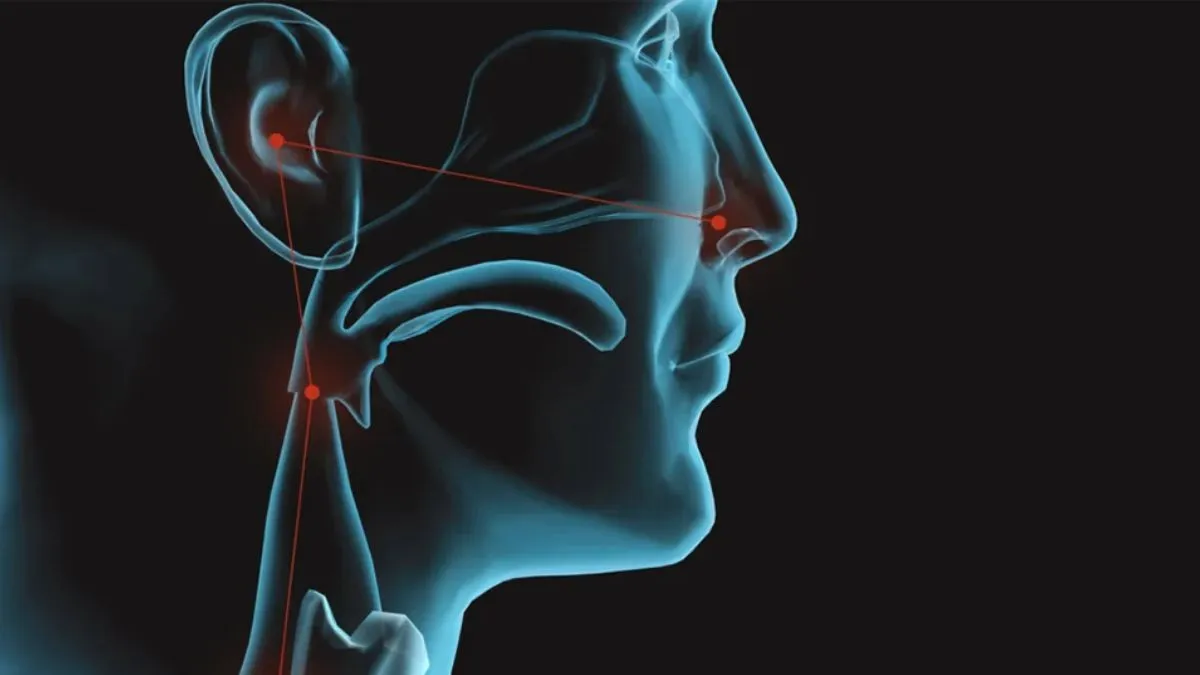
Our ears, nose and throat are small but vital parts of the body. They help us breathe, listen, speak and stay safe. In children, these systems are still developing. Because of that, disorders of the ear, nose and throat (ENT) are very common. According to Dr Sundhari V, ENT Head & Neck Surgery, Apollo Spectra Hospital, Chennai, recognising these problems early helps prevent long-term trouble. “Children face a higher risk of infections because their developing immune systems have not yet fully matured,” he explains. Children are more prone to ENT issues because their immune systems are still developing.
Table of Content:-
What an ENT Disorder Means in Kids![]()
ENT disorders cover a range of issues in children’s ears, nose and throat. Dr Sundhari V emphasises, “The three essential body regions play a crucial role in hearing, breathing and speech development. Early detection of these conditions enables medical professionals to stop complications from developing and support standard growth patterns.”
Common examples include:
- Ear infections (otitis media): The buildup of bacteria or viruses behind the eardrum may cause pain, fever and temporary hearing loss. If untreated, speech and language development may be at risk.
- Tonsillitis & enlarged adenoids: Inflamed tonsils cause throat pain and swallowing difficulty. Swollen adenoids may obstruct the airway, cause snoring or disrupt sleep.
- Sinusitis & allergic rhinitis: Blocked nasal passages affect breathing, concentration and comfort.
- Speech, hearing and sleep issues: Repeated ear problems or throat issues may affect hearing, delay speech, or lead to sleep apnoea (brief interruptions in breathing during sleep).
Dr Sundhari V states: “Children who develop sleep apnoea experience brief interruptions in breathing during sleep, which negatively impact their rest patterns and energy levels.”
ALSO READ: Viral KBC Kid And Six Pocket Syndrome: Psychologists Explain The Impact On A Child's Overall Growth
How Big a Problem? What the Studies Show
Research confirms ENT disorders are frequently seen in children. For example, a review found that children suffering from key ENT illnesses such as chronic sinusitis and adenoid hypertrophy showed significantly lower health-related quality of life.
Another study in a paediatric population found that nasal disorders (≈ 54.6 %), followed by ear disorders (≈ 22.8 %) and throat issues (≈ 22.7 %), were the most common. These findings underline that ENT disorders are not rare, as many children are exposed to them, and the effects may ripple into other areas of health and development.
Why Early Check-Ups Are So Important![ENT Disorder in children ENT Disorder in children]()
Dr Sundhari emphasises that early ENT screenings aren’t limited to illnesses. “Regular ENT checkups allow doctors to identify hearing, breathing, or speech issues even before symptoms worsen,” she says.
Early evaluation is especially critical for:
- Speech delays: Left untreated, chronic ear infections can impair hearing and delay language development.
- Sleep issues: Children who snore persistently or sleep restlessly might have enlarged adenoids or sleep apnea.
- Recurring infections: Frequent earaches or sore throats can signal a chronic condition that needs targeted care.
“Many of these problems can be treated quickly if caught early with medication, therapy, or small lifestyle changes,” Dr Sundhari adds. Timely diagnosis ensures children grow with healthy hearing, strong speech, and proper breathing patterns.
What Parents Can Do: Practical Steps at Home
Here are some actionable tips to support your child’s ENT health:
- Encourage good hygiene: hand-washing, covering nose/mouth while sneezing/coughing to reduce infection spread.
- Monitor sleep and breathing: open mouth, heavy snoring or pauses in breathing may signal airway issues.
- Be alert to speech or hearing delays: if your child often asks “What?” or struggles in class, get a hearing test.
- Control environmental allergens: dust, pet dander or mould may worsen nasal & throat problems.
- Keep regular check-ups: even if no major symptoms, early evaluation can identify silent issues.
ALSO READ: Can Music Lessons Help Kids with ADHD? Here Is What Science Says
Conclusion
ENT disorders in children may seem minor at first — an earache here, a blocked nose there — but they can affect hearing, speech, growth and sleep if not addressed early. With expert guidance from Dr Sundhari V and evidence from multiple studies, it’s clear: early check-ups and timely treatment matter. By staying attentive to symptoms and seeking help early, you help your child breathe easier, speak clearly and learn confidently.
Also watch this video
How we keep this article up to date:
We work with experts and keep a close eye on the latest in health and wellness. Whenever there is a new research or helpful information, we update our articles with accurate and useful advice.
Current Version
Oct 23, 2025 11:54 IST
Modified By : Vivek KumarOct 23, 2025 11:54 IST
Modified By : Vivek KumarOct 23, 2025 11:54 IST
Published By : Vivek Kumar

